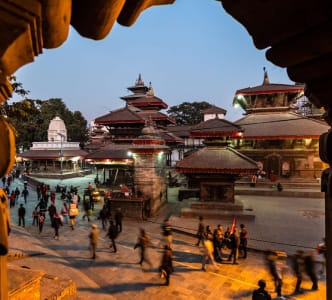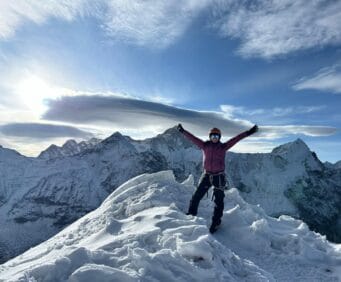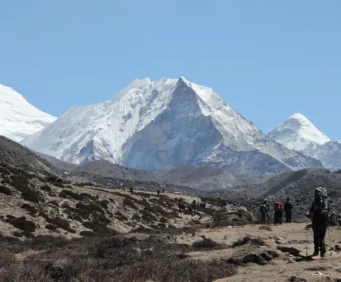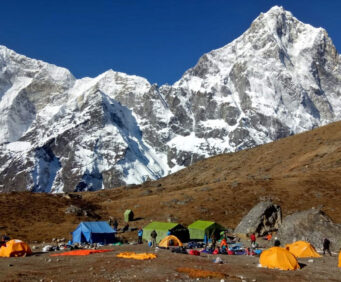
Best Treks in Everest Region: The Top Himalayan Adventures
15th June, 2025 - Posted By: Himalayan AbodeThe Everest Region of Nepal is a dream destination for trekkers worldwide, offering breathtaking landscapes, towering peaks, vibrant Sherpa culture, and some of the most iconic trekking routes on the planet. Whether you are a seasoned mountaineer or an enthusiastic beginner, the Everest Region has a trek suited to your adventure level and interests. In this comprehensive guide, we explore the best treks in the Everest Region, highlighting their unique features, difficulty levels, durations, and why they should be on your bucket list.
Why Trek in the Everest Region?
The Everest Region, also known as the Khumbu Region, is home to Mount Everest (8,848.86m), the world’s highest peak. Beyond Everest, the region boasts spectacular glaciers, deep valleys, ancient monasteries, and welcoming Sherpa villages. Trekking here is not just a physical journey but a cultural and spiritual experience enriched by the natural beauty and the warmth of the local people.
Top 7 Best Treks in the Everest Region
1. Everest Base Camp Trek (EBC)
Duration: 12-14 days
Difficulty: Moderate
Best Season: March to May, September to November
The Everest Base Camp Trek is the quintessential Everest adventure, attracting thousands of trekkers annually. Starting with a scenic flight from Kathmandu to Lukla, the trek passes through Sherpa hubs like Namche Bazaar, Tengboche, and Dingboche before reaching the iconic Everest Base Camp at 5,364 meters.
Highlights:
- Stunning views of Everest, Lhotse, Nuptse, and Ama Dablam
- Visit to Tengboche Monastery, a spiritual center of the Khumbu
- Acclimatization at Namche Bazaar and Dingboche
- Climb to Kala Patthar (5,545m) for the best panoramic view of Everest
- Experience Sherpa culture and hospitality
This trek is perfect for those seeking a classic Everest experience with moderate physical challenge and remarkable scenery.
2. Three Passes Trek
Duration: 18-21 days
Difficulty: Challenging
Best Season: March to May, September to November
For seasoned trekkers looking for a comprehensive Everest adventure, the Three Passes Trek is the ultimate challenge. This circuit covers the Everest Base Camp route plus three high mountain passes: Renjo La (5,360m), Cho La (5,420m), and Kongma La (5,535m).
Highlights:
- Crossing three high passes with panoramic views of Everest, Lhotse, Makalu, and Cho Oyu
- Exploration of Gokyo Lakes and ascent of Gokyo Ri for spectacular vistas
- Visit remote Sherpa villages and monasteries
- Experience diverse landscapes from lush forests to glacial moraines
This trek demands good fitness and acclimatization but rewards with solitude and some of the best views in the Himalayas.
3. Gokyo Lakes and Gokyo Ri Trek
Duration: 12-14 days
Difficulty: Moderate to Challenging
Best Season: March to May, September to November
The Gokyo Lakes Trek is a less crowded alternative to the Everest Base Camp trek, famous for its stunning turquoise lakes and panoramic mountain views. The trek follows the Dudh Koshi River and ascends to the Gokyo Valley, home to six sacred lakes.
Highlights:
- Spectacular views from Gokyo Ri (5,357m), including Everest, Cho Oyu, and Lhotse
- Trek through pristine forests and across the Ngozumpa Glacier, the largest glacier in Nepal
- Visit traditional Sherpa villages like Dole and Gokyo
- Opportunity to combine with the Three Passes Trek for an extended adventure
Ideal for trekkers seeking tranquility and natural beauty away from the busier EBC trail.
4. Pikey Peak Trek
Duration: 7-8 days
Difficulty: Moderate
Best Season: March to May, September to November
Pikey Peak Trek offers spectacular panoramic views of the Everest range and is known for its cultural richness. It is a shorter and less strenuous trek, making it accessible to many travelers.
Highlights:
- Panoramic views of Everest, Makalu, and other Himalayan giants
- Explore Sherpa villages and experience local traditions
- Less crowded trails with serene landscapes
- Opportunity to visit the birthplace of Tenzing Norgay, the first man to summit Everest
This trek is perfect for travelers who want a rewarding Everest experience in a shorter time frame.
5. Mera Peak Climbing Trek
Duration: 18-20 days
Difficulty: Challenging (requires climbing skills)
Best Season: March to May, September to November
Mera Peak (6,476m) is the highest trekking peak in Nepal and offers an excellent climbing experience with less technical difficulty compared to other Himalayan climbs.
Highlights:
- Climb to the summit of Mera Peak with stunning views of Everest, Lhotse, Makalu, and Cho Oyu
- Trek through the Hinku Valley, a remote and peaceful region
- Experience Sherpa culture and visit monasteries
- Combination of trekking and mountaineering adventure
Mera Peak is ideal for trekkers wanting to combine trekking with peak climbing.
6. Makalu Base Camp Trek via Three Cols
Duration: 20-22 days
Difficulty: Challenging
Best Season: March to May, September to November
For adventurers seeking a remote and less-traveled route, the Makalu Base Camp Trek via the Three Cols (West Col, Sherpani Col, Amphu Labtsa Pass) is a thrilling option.
Highlights:
- Remote wilderness with spectacular views of Makalu (8,463m), the fifth highest mountain in the world
- Technical trekking and glacier crossing
- Visit isolated Sherpa villages and alpine landscapes
- Experience true Himalayan mountaineering adventure
This trek is for experienced trekkers with good fitness and some mountaineering skills.
7. Phaplu to Everest Base Camp Trek
Duration: 14-16 days
Difficulty: Moderate
Best Season: March to May, September to November
An alternative route to Everest Base Camp, starting from Phaplu, offers a quieter and scenic approach.
Highlights:
- Explore less crowded villages and trails
- Enjoy diverse landscapes from forests to high alpine terrain
- Visit monasteries and interact with local Sherpa communities
- Reach Everest Base Camp with a fresh perspective
This trek is suitable for those who want to avoid the busy Lukla route.
Practical Tips for the treks in Everest Region
- Best Time to Trek: Spring (March-May) and Autumn (September-November) offer clear skies and moderate temperatures.
- Permits Required: TIMS card and Sagarmatha National Park permit are mandatory for most treks.
- Acclimatization: Take rest days at Namche Bazaar and Dingboche to prevent altitude sickness.
- Packing Essentials: Layered clothing, sturdy trekking boots, trekking poles, and a good sleeping bag.
- Health and Safety: Stay hydrated, avoid alcohol, and listen to your body for altitude sickness symptoms.
- Local Culture: Respect Sherpa traditions, dress modestly, and support local businesses.
Recent Posts



